Numerous Greek scholars flocked to the library to work, contributing to Alexandria’s reputation as a leading city.
Many believe that it was destroyed in a cataclysmic fire.
In actuality, however, the dissolution of the library was much more complex.
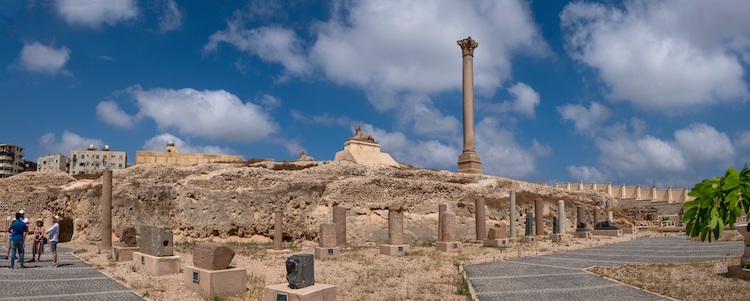
Modern-day view of the ruins of the Serapeum of Alexandria, which is considered to be the daughter structure of the Great Library of Alexandria. (Photo:Stock Photosfrom Cortyn/Shutterstock)
Here, we will look at the events that led to its rise and fall.
Creation of the Great Library of Alexandria
Map of ancient Alexandria.
The Mouseion was located in Bruchium.
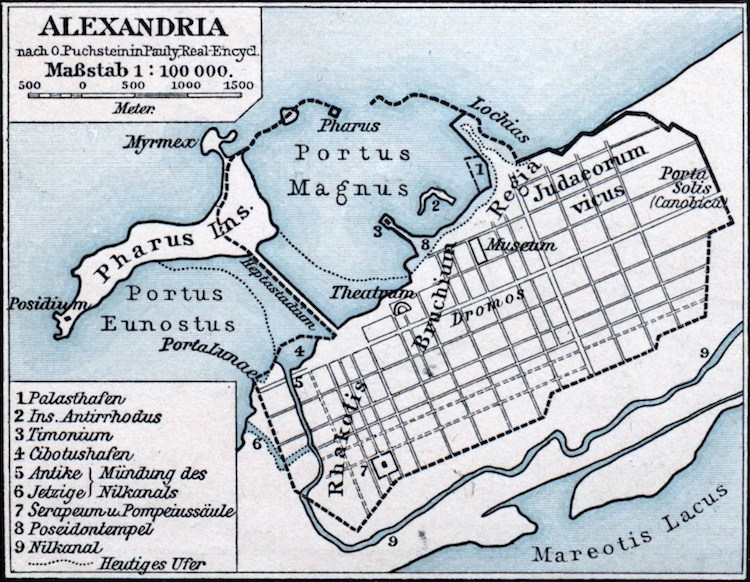
Map of ancient Alexandria. The Mouseion was located in “Bruchium.” (Photo viaWikimedia Commons[Public Domain])
(Photo viaWikimedia Commons[Public Domain])
O.
Von Corven, The Great Library of Alexandria, c. 19th century.
Additionally, all scholars who studied at the institution received free meals and free room and board.
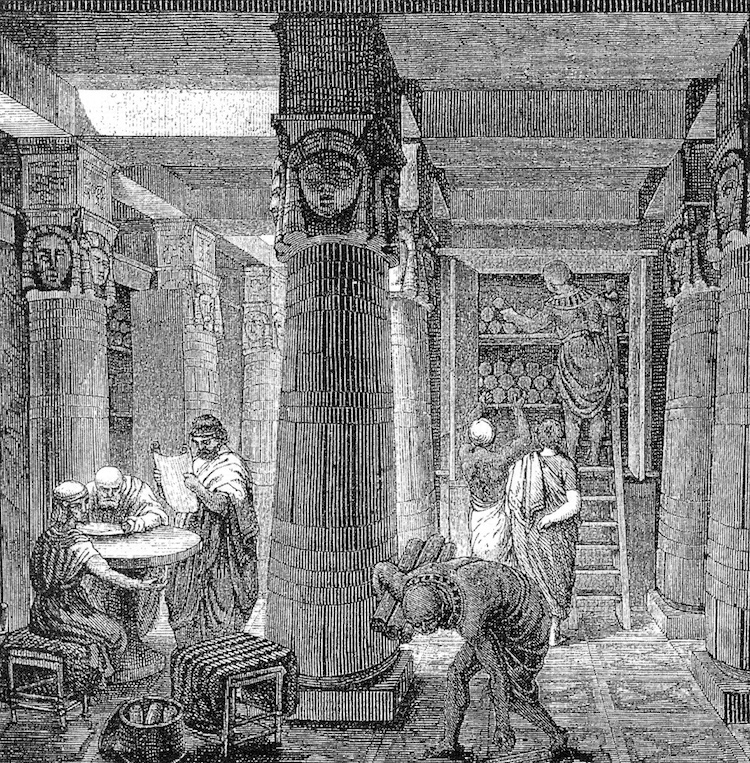
O. Von Corven, “The Great Library of Alexandria,” c. 19th century. (Photo viaWikimedia Commons[Public Domain])
However, the library did not fall after the fire, as many believed.
Modern-day view of the Library of Celcus in Ephesus, Turkey, 117-132 CE.
Learn About Dining and Diets in the Ancient Empire
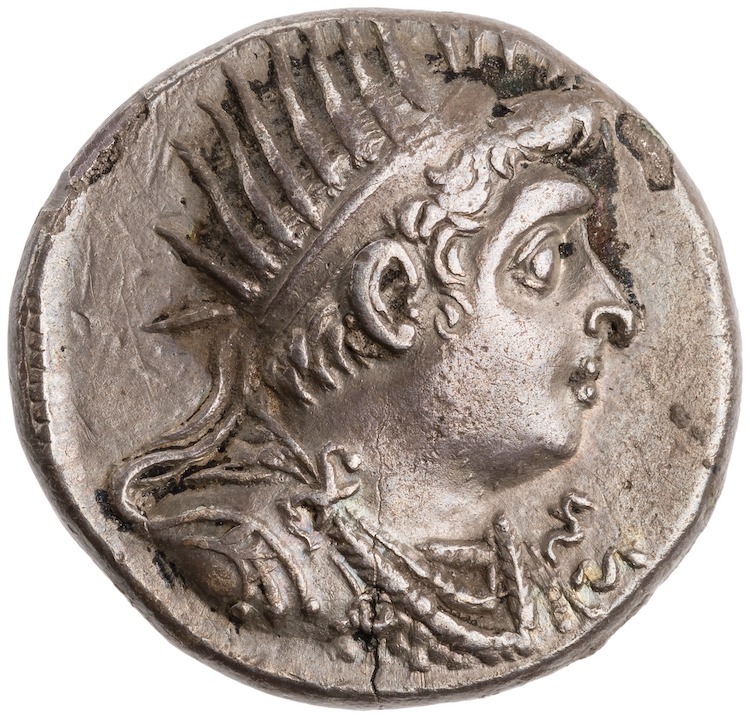
Coin featuring the portrait of Ptolemy VIII, c.138-7 BCE (Photo viaWikimedia Commons[CC0 1.0 Public Domain Dedication])

Bust of Julius Caesar, c. 50-40 C.E. (Photo viaWikimedia Commons[Public Domain])
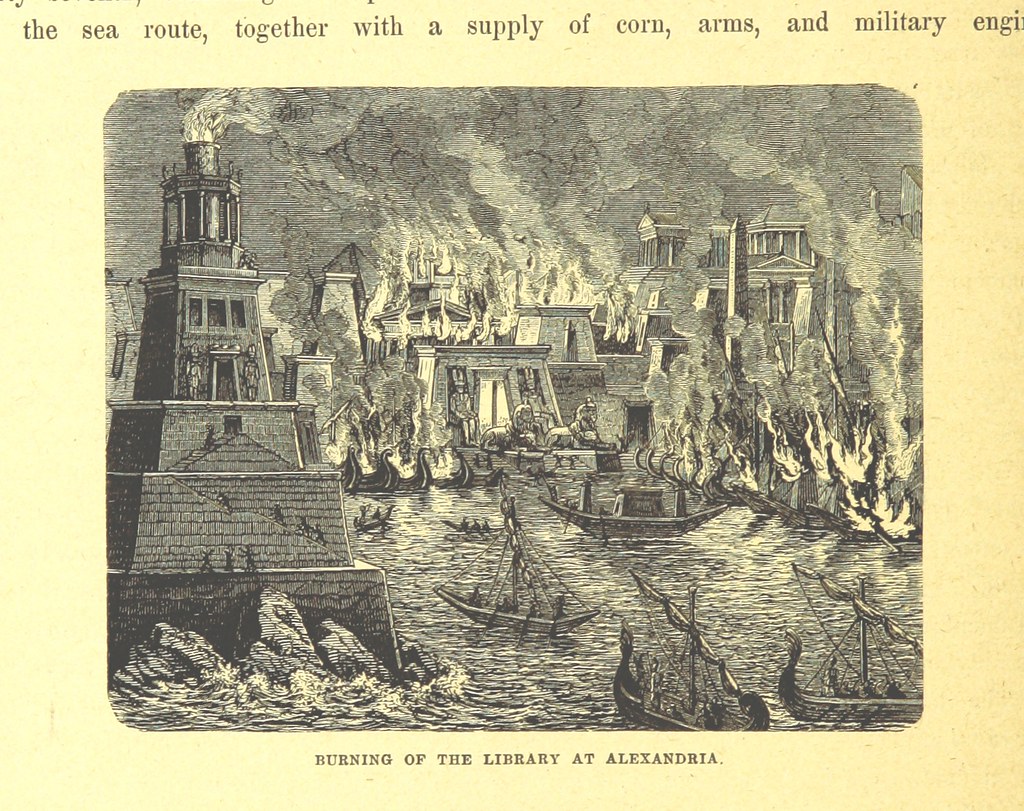

Map of the Roman Empire under Emperor Hadrian, 125 CE (Photo viaWikimedia Commons[CC BY-SA 3.0])
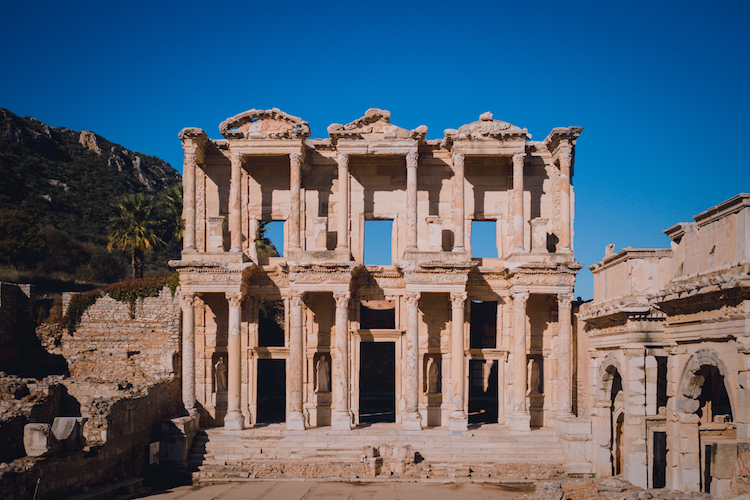
Modern-day view of the Library of Celcus in Ephesus, Turkey, 117-132 CE. (Photo:Stock Photosfrom Pixels_Poet/Shutterstock)